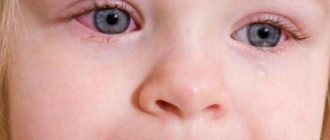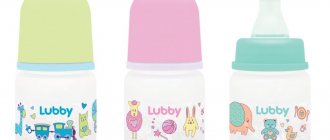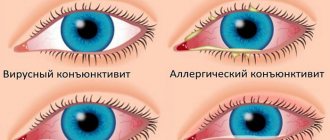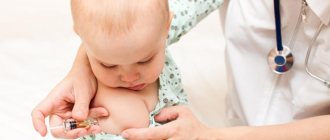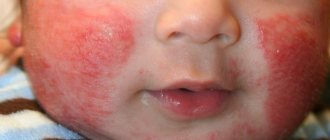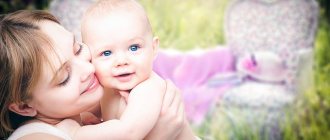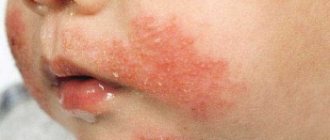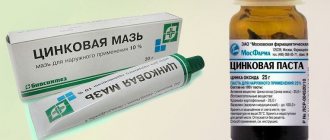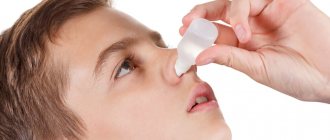Types of wound healing ointments and the principle of their action
Ointments that heal wounds and abrasions are used to protect against infection during the restoration of damaged skin and its disinfection.
There are several types of wound healing agents, which are divided according to the principle of action and the nature of the wound that they should eliminate:
- drying: for the treatment of weeping wounds, festering cracks;
- disinfectants: form a protective layer (film) at the site of application, preventing infections and bacteria from entering the deep layers of the skin;
- regenerating: accelerate the natural recovery process, suitable for frostbite and open wounds;
- containing antibiotics: used for long-term non-healing purulent lesions and erosions.
- anti-inflammatory: neutralize inflammatory processes in closed wounds and sprains.
Preparations for healing damaged skin must have the ability to liquefy thick pus, restore water balance, and also have long-lasting osmotic activity. Ointments stimulate the growth of new epithelium. Ichthyol, streptocide, gentamicin ointments are considered outdated medicines that do not have all the necessary properties.
However, as a preventive measure and for minor injuries, their use is quite acceptable.
In the treatment of deep and large wounds, it is better to use more modern means. The principles of each type of ointment differ, but their common goal is the regeneration and restoration of damaged skin. To achieve the desired effect, the preparations contain regenerating active substances, such as vitamins D and E.
Wounds, abrasions, cuts in a child, what is the difference
Wound is a general name for all mechanical damage to the skin, as well as muscles, bones and internal organs.
Abrasions are minor damage to the upper layer of skin , accompanied by slight bleeding and the ingress of particles of asphalt and other foreign bodies.
Cuts are more serious injuries . Their main feature is the predominance of the length of the wound over its depth. A cut can occur if a child falls on a sharp stone or a piece of broken glass, a nail or other dangerous objects. Cuts can be simple and clean, but they can be complicated: deep and touching large vessels, which can be accompanied by infection.
From what age can it be used?
An ointment that heals wounds and abrasions is also used depending on age. Each drug has specific indications for use. Ointments such as Bepanten are used even for infants.
The article discusses effective healing ointments for wounds and abrasions.
For some, consultation with your doctor is necessary. Most ointments are still suitable for wound healing in children. Contraindications may include the presence of an allergic reaction, intolerance and other diseases.
Contraindications
Each wound healing agent has a list of contraindications.
But some points are similar to each other:
- presence of an allergic reaction;
- the use of products containing hormones cannot be used to treat open, purulent wounds and boils.
- individual intolerance to components.
As for the use of ointments by pregnant and breastfeeding women, in this regard you need to be more careful when selecting a medicine. Medical consultation is required before purchase.
Some substances contained in ointments, when absorbed, affect the body of the mother and fetus, which can cause developmental pathologies. Do not allow the drug to come into contact with the mammary glands during breastfeeding - components that get into milk can seriously harm the baby.
How to apply medications correctly
Small, shallow injuries that are not caused by puncture wounds or animal bites can be treated independently at home.
- In case of any damage, the skin must be treated: wash off the blood with clean water, apply an antiseptic. If the wound is deep and dirt or animal saliva has gotten into it, you should consult a doctor. Particles of dead skin must also be removed, as they are a source of infection and slow down recovery. Then the wound is covered with sterile material (bandage, clean cloth).
- If the wound is minor and the bleeding has stopped, the drug can be used. If there is a risk of infection or the serious nature of the wound, the doctor will prescribe a course of antibiotics. It is also necessary to take the course for people with diseases such as AIDS, diabetes, that is, those who have reduced immunity.
- Depending on the wound, a specific ointment is applied. It is applied in a thin layer.
- A bandage should be applied to the site where the drug is applied. Thus, a person eliminates the possibility of rinsing, too rapid absorption and abrasion.
- The ointment should be applied following the advice of a doctor. If the treatment is independent, then you need to follow the instructions and not overuse the amount of the drug. Frequent and generous application does not mean a quick recovery.
You should also not use several ointments at once - this can cause various side effects and will only harm the body even more. Danger arises when there is a risk of developing an infection. If the skin around the wound becomes dense, swollen, painful or burning, you should consult a doctor.
The infection can enter the bloodstream, and this leads to the development of systemic diseases. Sometimes, when infected, there are the following symptoms: fever, chills, weakness, depression. In such cases, in addition to treating the wound itself, the person is assisted in restoring and cleansing the body from the spread of infection.
This is the story one mother shared
We decided to go roller skating with the whole family, our daughter is very young (1.5 years old). Mom and dad on roller skates, a child in a stroller, everything was fine, until the next time we descended from the sidewalk, the wheels got stuck in a crack. Mom falls over the stroller, breaks her fingers, the girl was wearing a seat belt, so she wasn’t seriously injured - she scratched her palms, broke her lip and bruised her forehead a little. Dad was so confused that he didn’t know who to raise first and who to help. The mother, forgetting about her own pain, ordered to quickly pick up the stroller with the child and catch a car to take the baby to the emergency room. The girl was examined, the abrasions were treated with peroxide, a bandage with levomekol was applied and a bandage was applied, and the mother was sent to surgeons.
Be attentive to yourself and your children, provide first aid correctly and promptly for abrasions and bruises.
Review of ointments for wound healing
An ointment that heals wounds and abrasions must be used in combination only with sterile bandages and cotton wool, and clean water. Only after the damage has been treated is the medicine used. But some of these drugs are used after surgery, for example, on festering wounds.
For open wounds
Open wounds are an excellent place for harmful bacteria to grow. Therefore, ointments have a fairly strong antimicrobial and anti-inflammatory effect in order to avoid inflammatory processes with subsequent spread to healthy tissue.
- Levomekol is an ointment with a pronounced regenerating and anti-inflammatory effect. Thanks to it, new cells are formed, which replace dead ones. The active substance is chloramphenicol, which blocks the growth and reproduction of bacteria. The product can be used by children from 1 year.
- Baneocin is one of the best remedies for rapid wound healing. Release form: powder and ointment. The ointment is applied evenly over the wound in a small amount. The main active ingredients are bacitracin and neomycin. These components together prevent bacteria from multiplying and prevent the construction of cell membranes.
When treating open wounds, medications containing corticosteroids should be avoided.
For closed wounds
For closed wounds (abrasions, cuts), disinfecting, regenerating preparations are used, which may also have a drying effect.
- Miramistin is a stimulator of regenerative processes, protects the wound from bacteria and infections. The ointment also helps with burns. Apply 3 times a day. Active substances – benzyldimethyl, ammonium chloride monohydrate.
- Solcoseryl is an ointment for the treatment of various skin lesions, including scars after surgery and burns. The course of treatment is at least 2 weeks. The active substances are deproteinized dialysate.
Drugs with these effects will help not only in the treatment of closed wounds. In addition, they prevent the formation of scars.
For purulent wounds
Purulent wounds require immediate treatment. Pus, accumulating, can cause many diseases, including serious ones (threat of limb amputation). After the examination, the doctor will prescribe an ointment that will help rapid healing and prevent the proliferation of harmful bacteria and fungi.
- Oflomelid - affects deep and shallow purulent wounds, suitable for both children and adults. The main components are ofloxacin and methyluracil. Suppresses the development of inflammatory processes, including chronic and acute. Disinfects and dries.
- Agrosulfan is a drug that contains an inorganic silver compound. Disinfectant and anti-inflammatory agent. After use, purulent mass stops accumulating in the wound, and upon healing there are no traces left in the form of scars. Allowed for children from 1 month, it is not recommended for pregnant women.
If, when a patient has a purulent wound, he only gets worse, fever, chills, lethargy and other symptoms appear, it is necessary to call a doctor to prescribe more serious treatment.
For minor damage
For mild types of skin damage, for example, scratches and shallow cuts with a kitchen knife, you should also not neglect healing preparations, as this will help get rid of the unpleasant wound much faster.
In addition, even a small-looking scratch can become infected, which will be the beginning of damage to the entire body.
- Ichthyol ointment is one of the most famous in the treatment of injuries. It is used in the treatment of wounds and pimples. The active substance is ichthyol, but there are also auxiliary substances in the form of plant components and glycerin. The ointment accelerates healing and disinfects.
- Healer - the drug is more like a cream, contains plant components, aloe juice. It is used for minor damage, as well as for peeling skin. The ointment has a nourishing and softening effect, applied 2-3 times a day.
Small wounds will not cause concern if you treat them and leave them alone. If the blood crust is damaged frequently, there is a risk of dirt being introduced.
For facial skin damage
The face requires special care, and not all medications can be applied to it - this can cause irritation and rashes. Therefore, to treat wounds on the face, you need to choose medications that do not harm the mucous membranes and have a milder effect.
- Actovegin is an ointment with a regenerating effect. Suitable for almost all types of wounds, and can be applied to the skin of the face and mucous membranes. Affects burns, scratches and cracks. The active substance is a deproteinized hemoderivative of calf blood. The drug should not be used during pregnancy or if you have an allergic reaction.
- Eplan is a drug that can be applied to the skin of the face. The medicine is allowed to be used by children and pregnant women. Reduces swelling and is an anti-inflammatory agent.
When treating facial skin, you need to be especially careful. If after using this or that medication you experience itching or irritation, you must stop using the drug.
With fast effect
Speed is important in healing any wound. The faster the wound heals, the better, because dirt and harmful microorganisms penetrate the damaged skin. The rapid action occurs due to the regenerating properties of the drug.
- D-Panthenol – enhances tissue regeneration and prevents inflammatory processes. It is used for dermatitis, eczema, cracks, wounds after surgery and other skin damage. Apply 3 times a day.
- Betadine - with the active substance povidone-iodine. It has disinfecting and antiviral properties. Disinfects the wound and accelerates healing. In just a few seconds after application, complete disinfection occurs.
Betadine can also be applied to any area of human skin. D-Panthenol helps with childhood dermatitis.
With antibiotic
Ointments containing antibiotics help in the fight against infectious agents that can cause complications. Medicines also have an analgesic effect and accelerate regeneration.
- Lincomycin is an ointment with an antibiotic of the lincosamide group. Stops the proliferation of bacteria. The ointment is applied in a thin layer to the affected area of the skin. The ointment should not be used if you have an allergic reaction; this can lead to Quincke's edema, as well as in pregnant women.
- Gentamicin-akos – with the active substance gentamicin, which has a bactericidal effect. The ointment is suitable for treating problems such as bedsores and furunculosis. The drug is applied 3-4 times a day. Not used for allergic reactions.
Medicines with antibiotics are those for which the dosage and treatment time prescribed by the doctor must always be observed.
Folk remedies for abrasions and cuts in children
If you are not a supporter of drugs from the pharmacy and try to treat your child exclusively with natural remedies, pay attention to the following plants:
| Chamomile | Sold as a sachet or just a flower collection. It is used as a bactericidal, wound-healing and soothing agent . |
| Plantain | The most popular remedy among the people. Its juice has hemostatic and disinfecting properties. |
| Aloe | The plant is grown at home on the windowsill. The juice of this plant promotes rapid healing of wounds and has regenerative properties. |
| Nettle | Nettle is not often used to treat wounds. It stops blood perfectly and has wound-healing properties . |
| Sage | Also used in the form of tinctures or baths. Has bactericidal and wound healing properties . |
Speaking about wounds received during a walk, it is very important to talk about the behavior of the parents at this moment. When injured, the baby experiences not only pain, but also fear.
It is important to remember that no matter how serious the wound may be, mom and dad simply do not have the right to lose their composure. After all, the child senses your mood.
Try not to panic and calm the victim. You can give him something to drink and try to distract him. Once your child returns to a calm mood, he will allow you to properly inspect the damage and administer first aid.
The best drugs for children
An ointment that heals wounds and abrasions is used independently by the mother or the child himself only for minor injuries. If a child has been bitten by an animal, or has received a deep wound or burn, it is necessary to consult a doctor. Just like adults, a child must first treat the injury and then apply a certain wound-healing drug.
| Name | Components | Mode of application |
| Preparations with dexpanthenol (bepanten, d-panthenol, panthenol spray) | Dexpanthenol (provitamin B5) | 1-2 times a day with or without a bandage (course 10-14 days) |
| Actovegin | deproteinized hemoderivative of calf blood | 2-3 times a day |
| Solcoseryl | deproteinized dialysate from the blood of dairy calves | 2-3 times a day |
| Methyluracil ointment | Methyluracil | 2-3 times a day (course 15 days) |
It is still advisable to use a bandage when treating wounds in children, since the ointment can easily wear off during active movement.
Treatment of facial abrasions with traditional methods
When deciding how to remove damaged skin on the face, you should not ignore proven methods of traditional medicine. For quick healing, you can use one of the following recipes:
- Mix an equal amount of butter and chopped pine needles, mix and place in a cool place. You can use this balm three times a day, applying it to the abrasion with light massage movements.
- Apply the pulp of the puffball mushroom to the damage and wrap it with a bandage. The substances found in this mushroom kill germs and heal wounds well.
- Bandage a piece of a fleshy leaf of a three-year-old aloe to the wound or soak gauze in its juice and make a compress. This method of treatment is especially good if the abrasion has festered, but is also suitable for non-infected injuries.
- Carrot juice also has a regenerative effect on the skin and helps abrasions go away faster.
An abrasion on the face is an unpleasant phenomenon, but it can be easily dealt with if you start treatment on time and do not allow the damaged area of skin to become contaminated.
Cost of drugs in pharmacies
Prices in pharmacies may vary slightly depending on the region. But generally, the cost of drugs for wound healing is not too high. The cheapest (Methyluracil, Levomekol) can cost from 20-25 rubles, and the most expensive (Betadine, Baneocin) - from 150-200 rubles.
The use of wound-healing drugs on your own is acceptable if the wound is not serious, it has not become infected, and pus has not begun to form. In such cases, the ointment will help the skin recover faster without scars or scars.
